
Changes in Bird Species and Number through the seasons in a spring-fed arroyo in Northern New Mexico.
From previous experience with the location, it is known that there is a great deal of breeding activity in the summer, but during the winter, birds are scarce.
The intention is to survey species and individuals once per month through-out the year. Some results from the first 4 observations are summarized in the following graphs. Full data appears in the table following the graphs.

The small summary table below and the graph to the right show the number of individuals (Purple in table and graph) and the number of species (Green in table and graph):
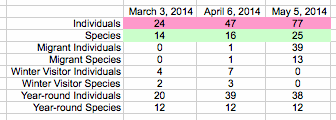
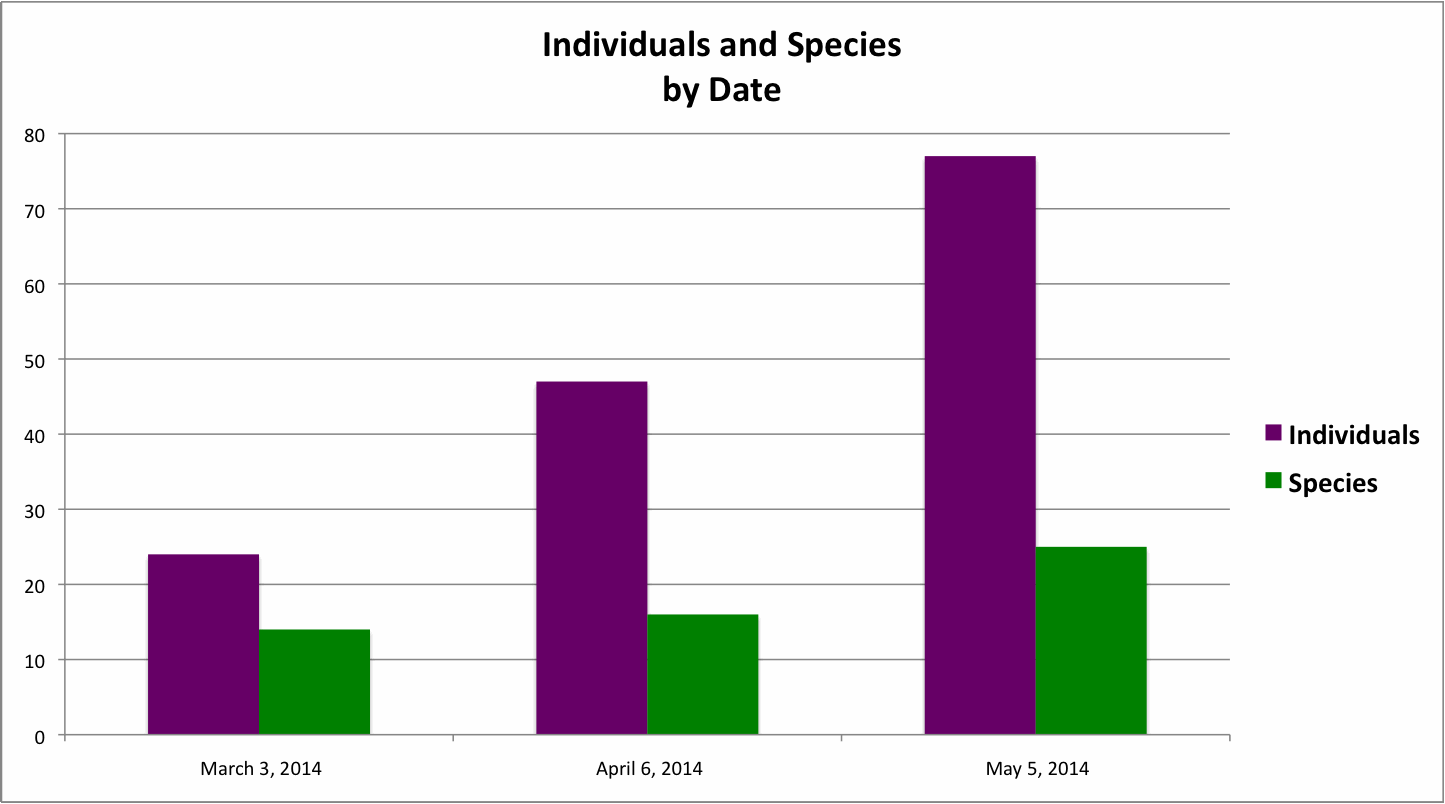
From March 1st to May 5th, the number of species doubled and the number of individuals tripled.
This increase involved both the arrival of Neo-tropical migrants and Year-round species moving up-slope from the river valley below.
May 5th is near the peak of the migration for many species. Some of the migrants present on May 5th were just transients on their way to breeding grounds further north and/or at higher elevations. This might account for the reduction of individuals observed on June 7th.
This next graph breaks down the species into Year-round (blue), Winter Visitors (red) and Migrants (green).
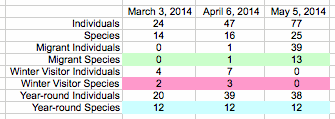
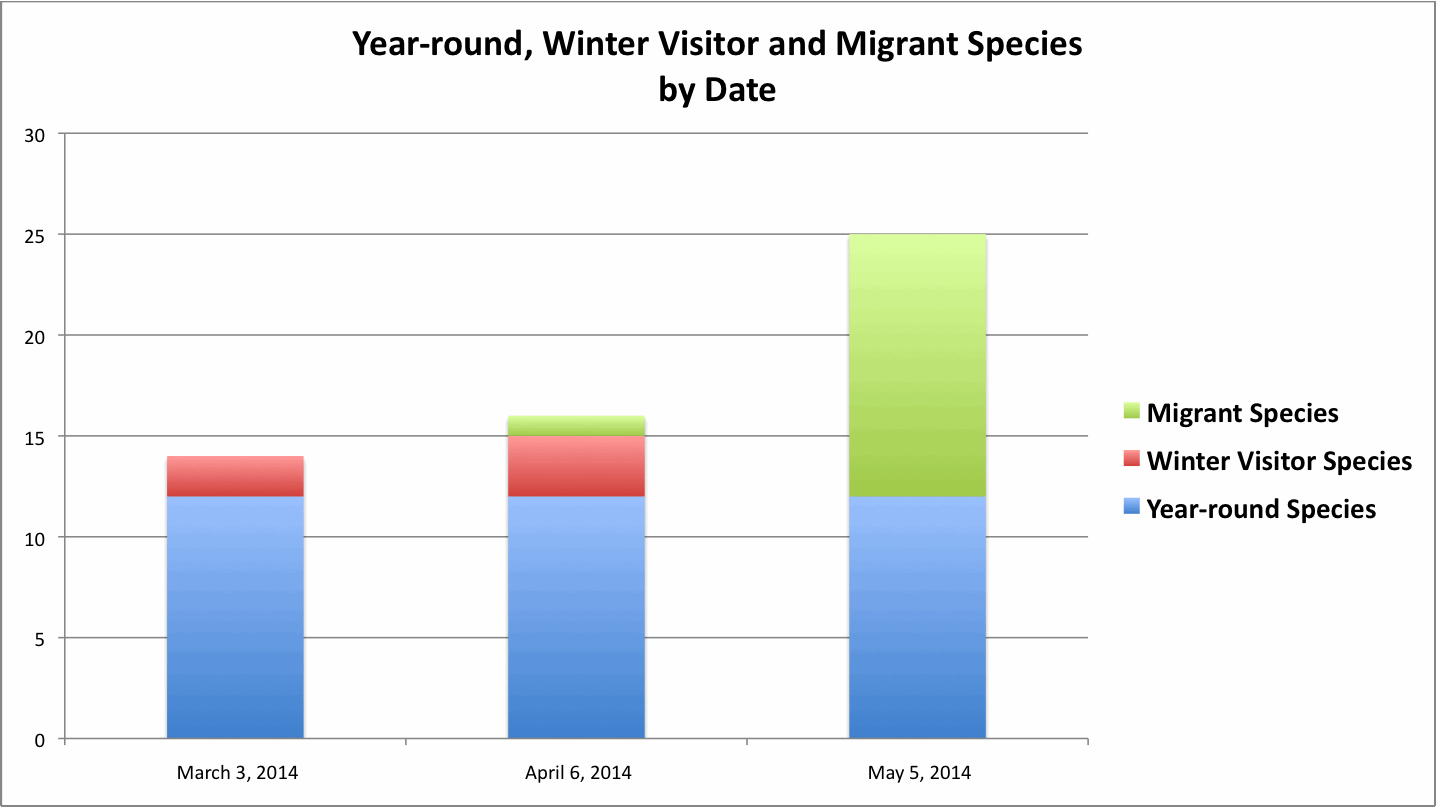
Year-round Species: Note that the number of Year-round Species present remained essentially constant during all four surveys.
Migrants: Even though the Winter Visitor species departed before May 5th, the incoming migrants more than made up the difference. There were as many migrant species on May 5th as there were Year-round species.
Transients: It appears that some species present during migration did not remain to breed in the arroyo. This was expected for the Orange-crowned and Yellow-rumped Warblers. The Orange-crowned Warbler generally breeds at slightly higher elevations and is more common in the western part of NM. The Yellow-rumped Warbler breeds primarily in high mountain coniferous forest. Both appear here during migration only as transients.
It is also possible that some migrant species were present, but were not detected. When paired birds have eggs or young in the nest, they sometimes become more secretive and are often less vocal. It is possible that the reduction in species was simply a reduction in detection.
This graph breaks down the counts of individuals by Year-round, Winter Visitors and Migrants.
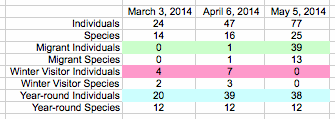
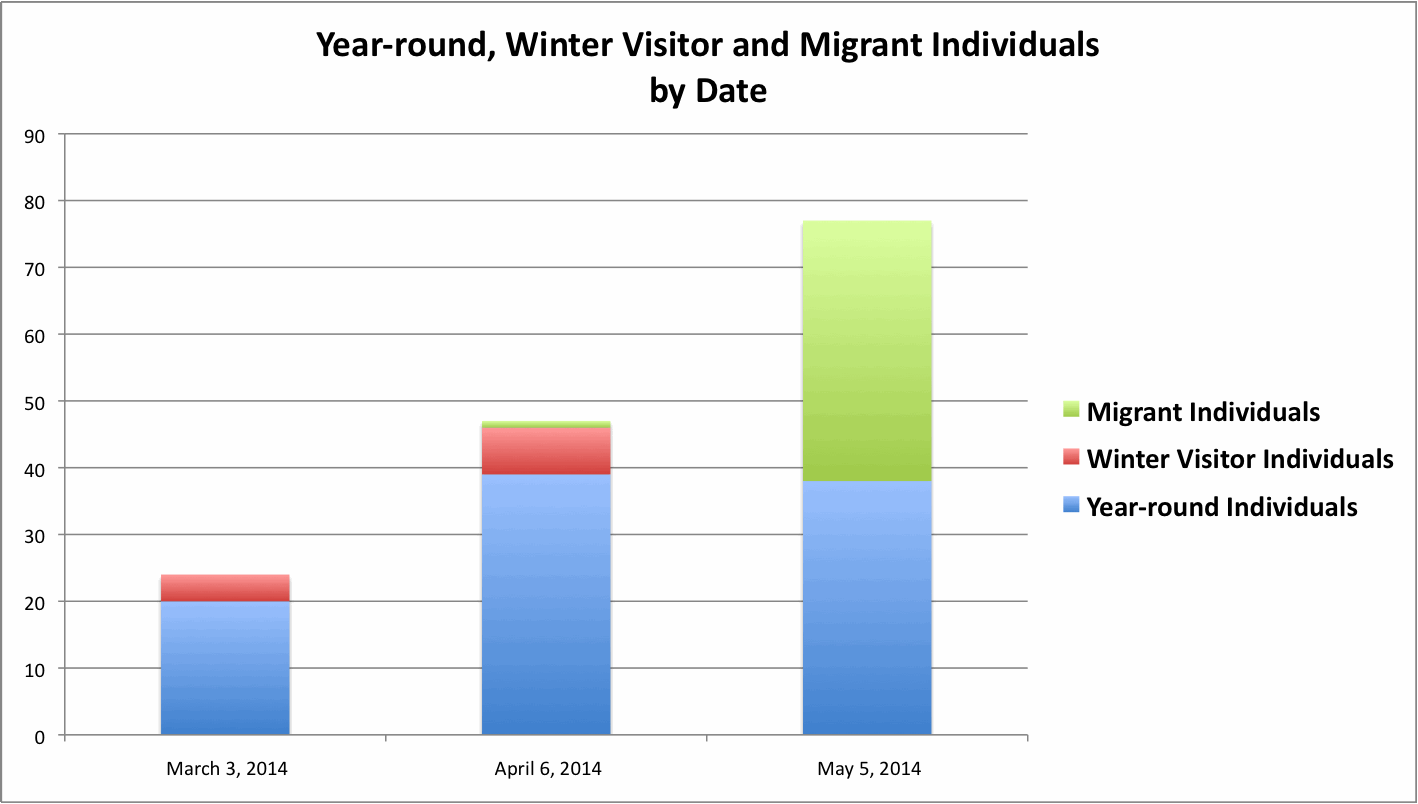
Year-round Species: The increase in numbers of Year-round Birds between Mar 1st and April 6th was likely driven by local breeders, who, after spending the winter in the river valley below the arroyo, moved up slope to establish breeding territories.
One example is the Spotted Towhee. This is a common species in winter in the river valley below. If you consult the raw data below, you will see that on March 1st, a single Spotted Towhee was detected and it was at the very lowest reaches of the arroyo.
However, by April 6th, there were 11 Spotted Towhee detected and they were quite evenly distributed all the way up the arroyo. Though there were only 8 Spotted Towhee detections on the May 5th survey, the distribution up the arroyo was still observed.
In the June 7th survey, this distribution of the Spotted Towhee was maintained with 11 Spotted Towhee detections: 4 in the lower section and 7 in the upper
Migrants: As we have already seen in the species count, the big news on April 6th was the arrival of the summer transient and breeding migrants. As with the species count, the number of migrant individuals was essentially equal to the number of year-round individuals on April 6th.
The June 7th survey shows a reduction in migrant species. This is partly due to the moving on of some transient species. This decrease may also be due to inability to detect actively nesting birds.
Because of the small sample size involved, it is also possible that the changes in the data from May to June may not precisely depict the actual situation. A failure to detect a species on a single pass through an area does not necessarily preclude the presence of that species.
On the Dixon Christmas Bird Count, 115 species have been observed over the 17 years of the count. However, the average number of species detected each year is only 58.
Raw Data:
